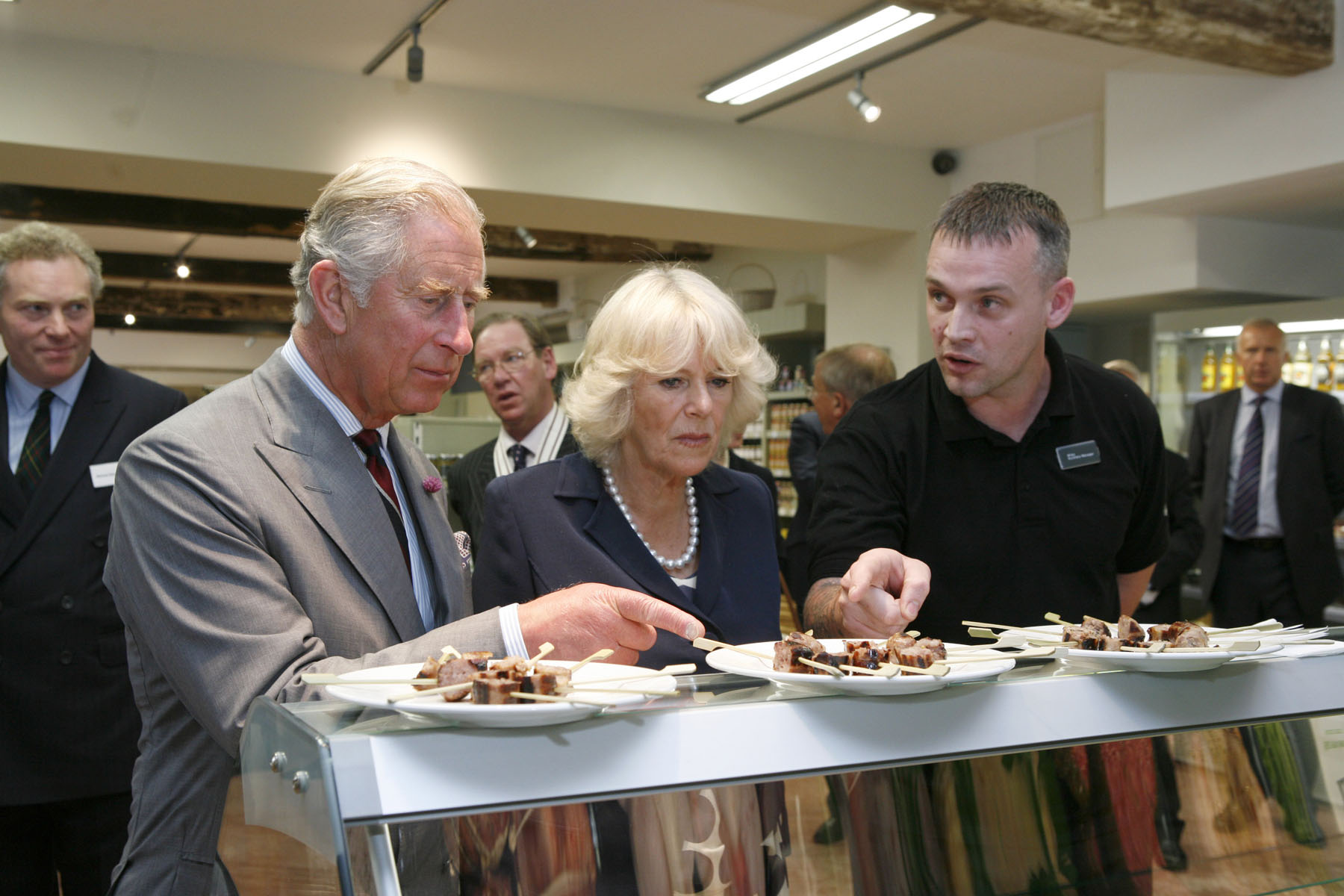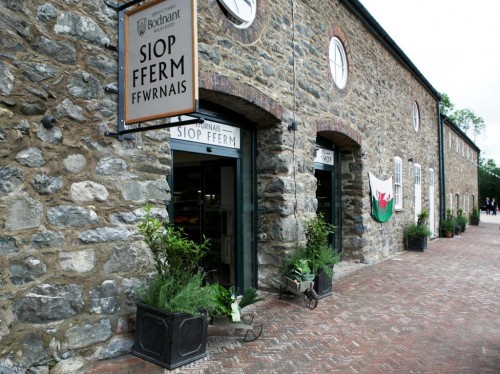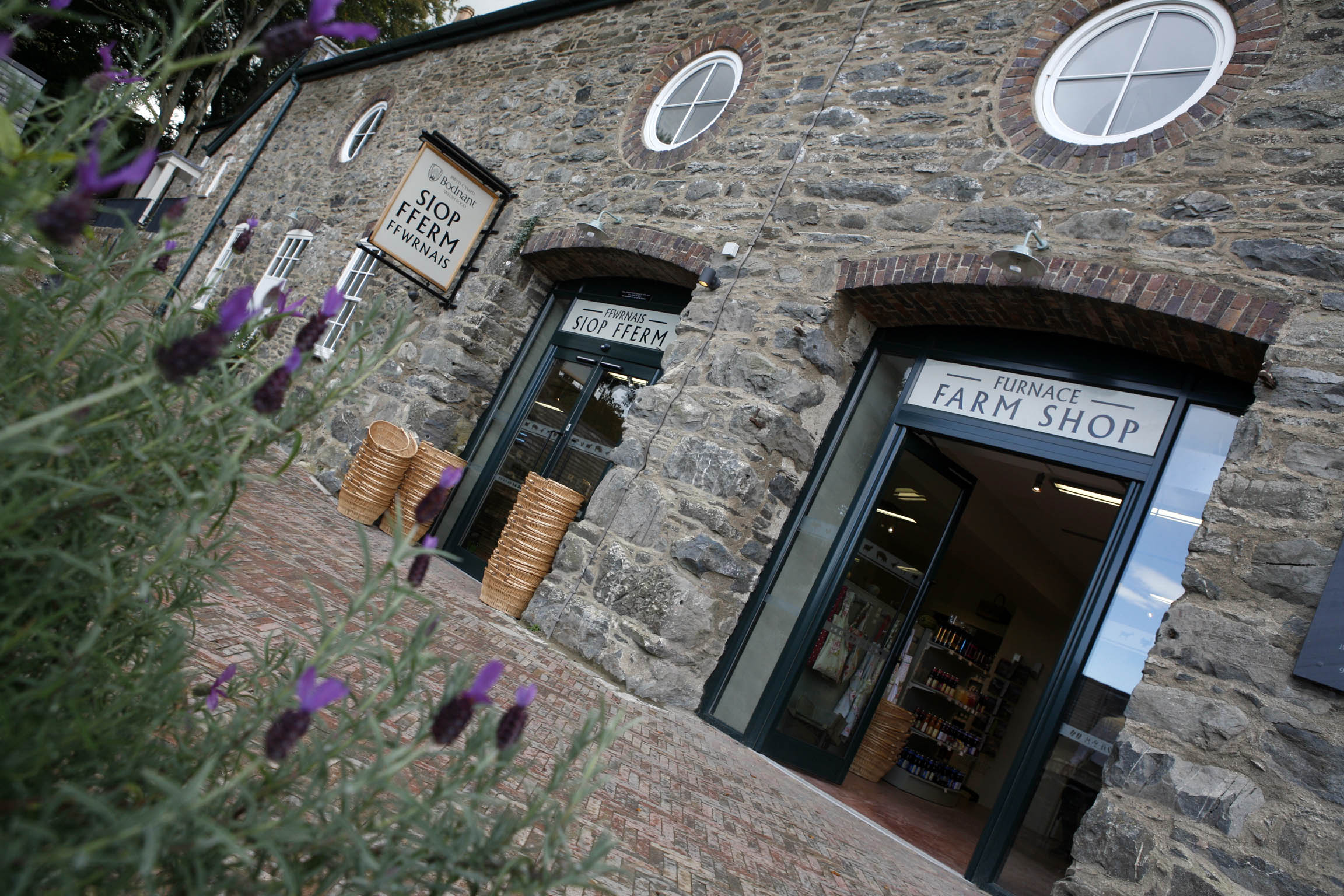Bodnant Welsh Food Center - An Interview With Chris Morton
Visit Bodnant as part of the Welsh Hill Farming Experience
Bodnant Welsh Food Centre is located at Furnace Farm, in the stunning surroundings of the Conwy Valley. Originally built in the 18thcentury, the buildings have been lovingly restored to provide an excellent venue for our farm shop , tea room , restaurant , cookery school and farmhouse accommodation . AmeriCymru spoke to managing director Chris Morton.
AmeriCymru: Care to introduce Bodnant Farm for our members and readers? What facilities and amenities does the farm offer?
.
Chris Morton: The Bodnant Welsh Food Centre, opened by His Royal Highness the Prince of Wales and the Duchess of Cornwall, just over a year ago, is a popular tourist attraction that celebrates the very best in Welsh seasonal produce and local produce.
Located in the stunning Conwy Valley in North Wales, it features a restaurant, tearoom, dairy, farm shop, cookery school and farmhouse accommodation.
The fine food centre, the only one of its kind in Wales, also houses a bakery and a butchery, as well as hosting weddings and conferences, regular wine tasting and wine appreciation courses.
The cookery school, run by renowned chefs and artisan bakers, is proving hugely popular with people from across Wales and the north west of England and is also a hit with budding young chefs.
Situated close to the world-famous Bodnant Garden, the centre is the brainchild of Bodnant estate owners Michael and Caroline McLaren. Their vision was to create an innovative centre for the production, promotion and enjoyment of Welsh Food.
More than 70 per cent of the produce sold at the farm shop comes from across Wales.
The centre is also home to the National Beekeeping Centre for Wales.
.
AmeriCymru: I know that a lot of our readers will be interested in the Hayloft Restaurant. Can you tell us more about the menu? Do you use mainly local produce?
.
Chris Morton: The Hayloft restaurant, converted from a former hay barn, provides dishes made from produce made on the estate and from the surrounding area.
The bread is baked in the bakery and the fish and shellfish caught fresh daily in the nearby Conwy Strait is served throughout the fine food centre. Meat is sourced from local farms and treated at the Bodnant butchery, whilst the cheese, butter and ice cream is produced in the dairy with milk from a herd of Friesian cattle located less than one mile away. In fact, the cows can be seen from the restaurant windows.
An ever-changing menu always features fresh, seasonal dishes, including Welsh cheddar cheese brulee; courgette and Pantysgawen goats cheese terrine; and fresh Conwy crab cocktail. Mouthwatering meals on the menu also include Welsh steak burger, Bodnant bacon (the pigs are free range and have their own meadow and lake) and Bodnant Aberwen cheese.
Diners are entertaining by musicians playing the harp and performing folk music, and the reputation of the restaurant has spread far and wide.
.
 Hayloft Restaurant opened by H.R.H Prince of Wales
Hayloft Restaurant opened by H.R.H Prince of Wales
AmeriCymru: What about accommodation? What's on offer at Bodnant?
.
Chris Morton: Bodnants luxury bed and breakfast accommodation is located within Furnace Farms 18th century farmhouse with most rooms offering stunning views across the Conwy Valley.
A stay in the farmhouse enables visitors to experience at first hand a rural tradition that has been passed down the generations over hundreds of years a way of life where agriculture, livestock and the cycle of the seasons are ingrained and intertwined.
.
AmeriCymru: Can you tell us a little about the history of the farm?
.
Chris Morton: The Bodnant Welsh Food Centre has been developed following the transformation of Furnace Farm, a collection of derelict farm buildings.
Furnace Farm has been part of the Bodnant Estate since the 18 th century. The building that is now a tearoom was added sometime between 1821 and 1841.
The farm was given its name due to the blast furnace that was established at the farm in the early 1700s. The furnace fell silent in 1841 after a disaster that ruined the quality of the work it produced. Workers at the time believed this was the work of an evil spirit and refused to continue working.
In 1874 retired chemist and industrialist Henry Davis Pochin bought the estate, including its 25 farms. Pochin made extensive alterations to the farmhouse, adding two bays at the front in order to match Bodnant Hall.
During his very active retirement at Bodnant he strengthened the banks of the dell that the river ran through and planted the great American and Orient conifers that surround the farm today.
After Pochin died in 1895 the farm was let until World War II when the farm was used to house evacuees from Liverpool and Manchester and was requisitioned by the Home Guard.
After the war Furnace Farm became a home farm again and electricity was first connected in 1947. Farming ceased in the 1960s and subsequently the farm and outhouses fell into disrepair.
Henry Pochins grandson Michael now owns the farm with his wife Caroline and it was their idea to develop Furnace Farm into the Bodnant Welsh Food Centre. Restoration began in 2010 and now the food centre employs more than 60 people, 95 per cent of whom live in the area.
.
AmeriCymru: I believe Bodnant was the first recipient of US tractors during WWII under the lend/lease agreement. Can you tell us more about this?
Chris Morton: After World War II, Furnace Farm was rented to the granddaughter of a Manchester councilor and became home to one of the first tractors to come to the UK as part of the US lend-lease arrangement.
The Lend/Lease Act was Americas way of helping Britain out. Prior to World War I, British agriculture was, for many of the poorer farmers, still dominated by horse-drawn machinery.
Between the wars a large amount of food was imported into Britain, which had driven British agriculture into decline. The dangers of shipping during World War 11 reduced their imports, forcing Britain to start ploughing every possible acre to produce food for a hungry nation.
A shortage of tractors prompted the US to send tractors and implements to Britain to use used by the remaining farm workers and the Womens Land Army, with many now collectorsitems.
AmeriCymru: What is your involvement with the Welsh Hill Farming Experience?
Chris Morton: Theres no better way to savour the Welsh Hill Farming Experience than by resting up in a lovingly restored 18 th century farmhouse.
The unique life of a hill farmer is perfectly matched by a stay at the cosy cottage accommodation at Bodnant Welsh Food.
The relaxed accommodation is furnished with soothing Farrow & Ball paints, handcrafted ironwork lights and Welsh-made Elanbach fabrics. Rooms are equipped with flat-screen TVs, WiFi, and powerful showers making them the perfect place to get a taste of rural life.
Guests also have use of the shared kitchen, which will allow for you to cater to your needs.
A visit to Bodnant Welsh Food not only enables visitors to enjoy the Welsh Hill Farming Experience it also helps to sustain the many farmers and food producers in the region who have worked the land for centuries.

















